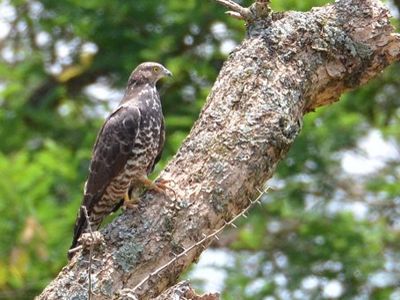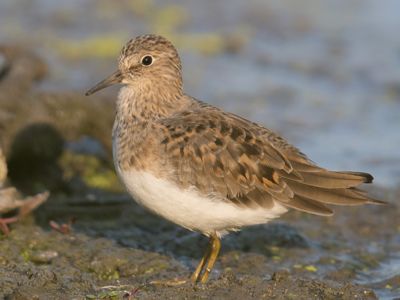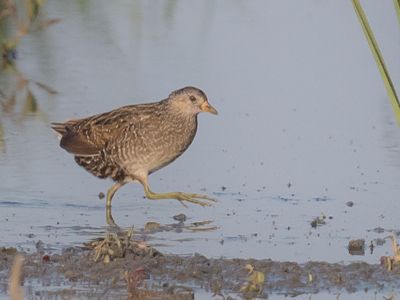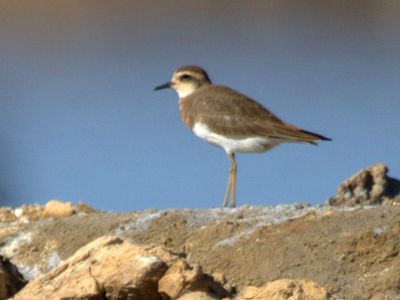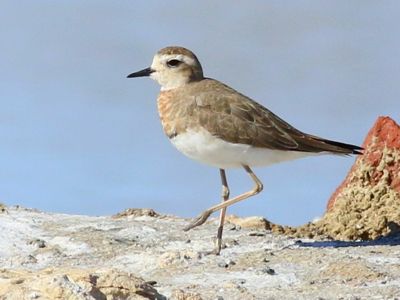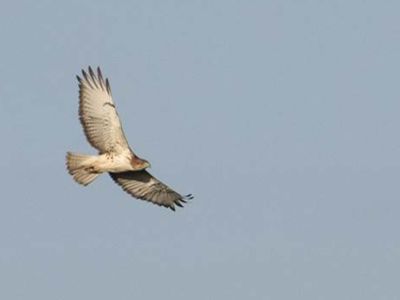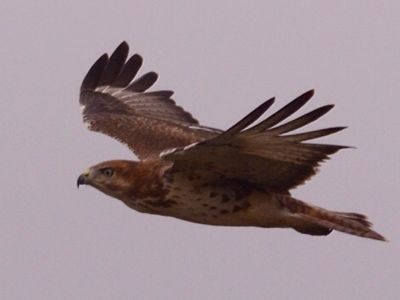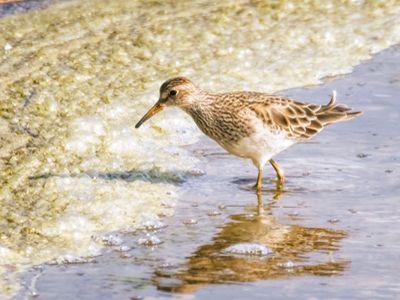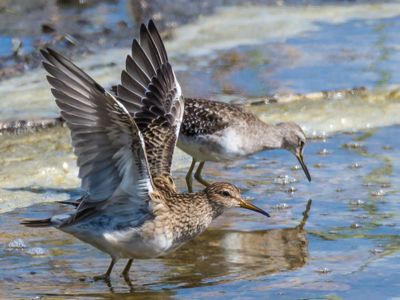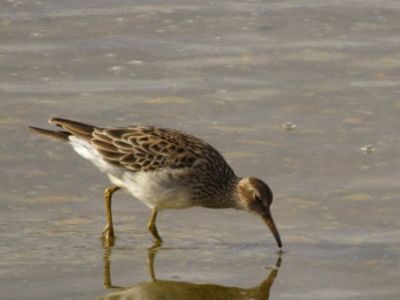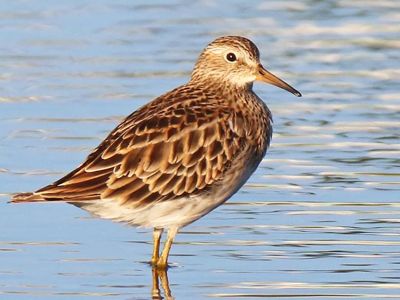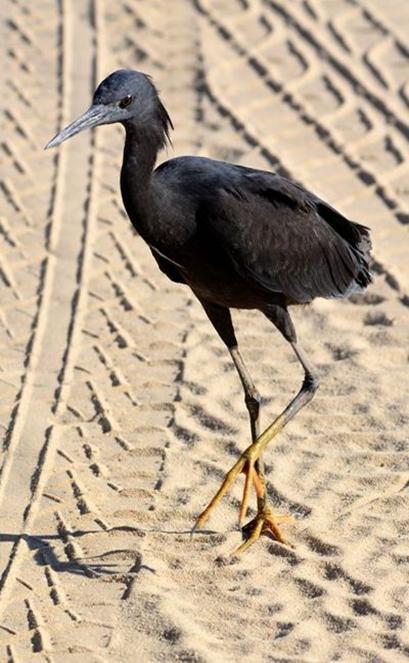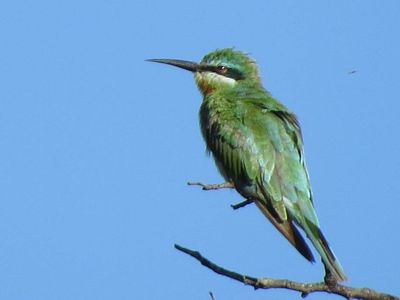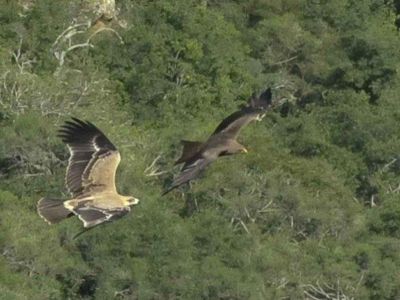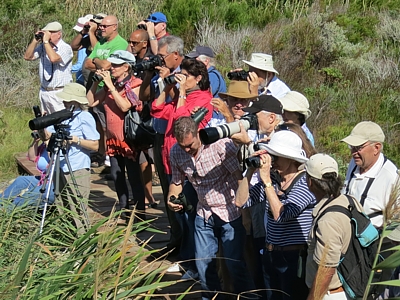SA Rare Bird News Report - 12 January 2017
Trevor Hardaker
| ||||
SA Rare Bird News is proud to be associated with the following brands: | ||||
|
|
| ||
|
|
| ||
| ||||
This is the Southern African Rare Bird News Report issued at 20h00 on Thursday, 12 January 2017. Information has been gleaned from various websites, email groups as well as from individual observers who have passed on their sightings. This report cannot be taken as being totally comprehensive as it is based only on information made available at the time of writing. All bird sightings reported here are reported in good faith based on information as provided by the observers. Any inaccuracies are totally unintentional and the writer cannot be held liable for these. For those who may have only joined the group recently and are interested in finding out what has been seen in the past, previous reports can be viewed at http://groups.google.co.za/group/sa-rarebirdnews | ||||
|
| |||
Time to get into my first formal report of 2017 and, as usual, we start with the scarcities:
EUROPEAN HONEY BUZZARD:
* One between Humansdorp and Soutvlei (Eastern Cape) last Wednesday. * One on the eastern shores of iSimangaliso Wetland Park about 1km in from the gate (KZN) last Thursday. * One at Spioenkop Dam near Bergville (KZN) on Friday. * One in Klein Windhoek (Namibia) on Friday. * One at the Nahoon estuary main hide in East London (Eastern Cape) on Saturday. * One in Jwaneng Township (Botswana) on Sunday. * One brought in to be rehabilitated in Katima Mulilo (Namibia) on Monday but, sadly, subsequently died. * One over Broederstroom (Gauteng) on Tuesday. * Two birds together over Centurion (Gauteng) between Valhalla and Erasmia on Tuesday. * One along the dirt section of Rinkhals Road in the Seringveld Conservancy (Gauteng) on Tuesday. * One in Delta Park (Gauteng) on Tuesday. * One in Velddrif (Western Cape) at -32.795, 18.138 on Tuesday. * Three birds between Mission Rocks and Cape Vidal (KZN) on Tuesday. * One at Shitlave Dam near Pretoriuskop in the Kruger National Park (Mpumalanga) yesterday. * One foraging in the Waterworld car park next to the East London grand prix circuit (Eastern Cape) today. | ||||
|
| |||
|
| |||
European Honey Buzzard at Spioenkop Dam © Lizette de Coning | European Honey Buzzard in Velddrif © Ian Gordon | |||
|
| |||
|
| |||
European Honey Buzzard in Centurion © Klaus Schmid | European Honey Buzzard in Klein Windhoek © Neil Thomson | |||
|
| |||
| ||||
European Honey Buzzard at Waterworld in East London © George Branford | ||||
|
| |||
On to the rest of the news and, starting in the Western Cape, a lot of the focus has remained on Strandfontein Sewage Works where most of the rarities have continued to show extremely well this week. The ever popular TEMMINCK’S STINT has continued to draw the crowds who have also enjoyed the AMERICAN GOLDEN PLOVER, RED-NECKED PHALAROPE, 2 PECTORAL SANDPIPERS and SPOTTED CRAKE while locals have also enjoyed the continued presence of the AFRICAN JACANA and at least one SAND MARTIN this week as well. Just next door, yet another SPOTTED CRAKE was seen from the Wheeler hide at Rondevlei Nature Reserve on Tuesday (and was also still there today).
Elsewhere in the province, the Kliphoek Salt Pans in Velddrif (entry through Kuifkopvisvanger farm – www.kuifkop.co.za) also continued to attract attention with at least 2 RED-NECKED PHALAROPES and 2 CASPIAN PLOVERS remaining on until at least Monday. Moving eastwards, a LILAC-BREASTED ROLLER was seen along the Karwyderskraal Road near Bot River between the rubbish dump and the old steel bridge (seemingly, only the 3rd record for the province) on Monday, the RED-NECKED BUZZARD remained in place around Melkhoutfontein earlier today, a PECTORAL SANDPIPER was discovered along the Hartenbos River on Monday creating some local excitement and was still present today, a EUROPEAN ROLLER was located along the road from the N2 down to Glentana yesterday, an immature COMMON CUCKOO was seen at Gouritzmond yesterday and a GOLIATH HERON was found on a nest at Kammanassie near Oudtshoorn on the weekend, a rather strange nesting record for the Little Karoo. | ||||
|
| |||
|
| |||
Temminck’s Stint at Strandfontein Sewage Works © Matthew Prophet | Temminck’s Stint at Strandfontein Sewage Works © Michael Mason | |||
|
| |||
|
| |||
Temminck’s Stint at Strandfontein Sewage Works © Pieter le Roux | Temminck’s Stint at Strandfontein Sewage Works © Frans-Hendrik Joubert | |||
|
| |||
| ||||
Red-necked Phalarope on left with Little Stint at Strandfontein Sewage Works © Michael Mason | ||||
|
| |||
|
| |||
Spotted Crake at Strandfontein Sewage Works © Michael Mason | Spotted Crake at Rondevlei Nature Reserve © Daud Sheard | |||
|
| |||
|
| |||
Red-necked Phalaropes at Velddrif © Andrew de Blocq | Red-necked Phalarope at Velddrif © Frans-Hendrik Joubert | |||
|
| |||
|
| |||
Caspian Plover at Velddrif © Andrew de Blocq | Caspian Plover at Velddrif © Frans-Hendrik Joubert | |||
|
| |||
|
| |||
Red-necked Buzzard at Still Bay © Ian Grant | Red-necked Buzzard at Still Bay © Alex Weaver | |||
|
| |||
|
| |||
Pectoral Sandpiper at Hartenbos © Don Reid | Pectoral Sandpiper at Hartenbos © Michael de Nysschen | |||
|
| |||
|
| |||
Pectoral Sandpiper at Hartenbos © Mike Bridgeford | Pectoral Sandpiper at Hartenbos © Dawid Rossouw | |||
|
| |||
Up in the Northern Cape, I’ve received several delayed reports, all from the Kgalagadi Transfrontier Park, which are included here for interest. A WESTERN OSPREY was seen on 13 December 2016 about 5km north of Twee Rivieren on the road to Nossob, a BLACK HERON was found walking along the road close to Kwang waterhole on 19 December 2016 and a male STRIPED CRAKE was seen early in the morning of 31 December 2016 walking around behind the tents in the campsite at Nossob, all rather bizarre records for the park.
In the Eastern Cape, a PECTORAL SANDPIPER was discovered at lower Zwelitsha on Monday. If one is driving from King Williams Town towards Zwelitsha sewage works, you turn left at the traffic light just before the sewage works and then follow the gravel road down to the bridge at the bottom and the bird was seen from the bridge. Please exercise caution in this area as it is apparently not all that safe, especially if you are on your own. Another great record concerned a single BLUE-CHEEKED BEE-EATER that was found at Egerton farm in the Cradock district on Monday while the COMMON REDSHANK was still along the Chatty River in Port Elizabeth on Sunday and one GREAT WHITE PELICAN and one YELLOW-BILLED STORK remained present at Diaz Dam near Boknes until at least Tuesday afternoon. | ||||
|
| |||
|
| |||
Pectoral Sandpiper at lower Zwelitsha © Rodnick Biljon | ||||
| ||||
| ||||
Blue-cheeked Bee-eater in the Cradock district © Tino Herselman | Black Heron near Kwang waterhole © Johan Janse van Vuuren | |||
|
| |||
| ||||
Western Osprey north of Twee Rivieren © Andrew Kruger | ||||
|
| |||
In the Free State, there was some local excitement yesterday when an AFRICAN OPENBILL was found along the R722 near Harrismith at 28°05.162' S, 29°12.056' E, an unusual record for the area.
Moving up the coast into Kwazulu Natal, the Sappi Stanger wetlands continued to produce the goods and were still hosting up to 3 SPOTTED CRAKES, a PECTORAL SANDPIPER and a WESTERN YELLOW WAGTAIL yesterday (a WESTERN MARSH HARRIER was also reported over the sugar cane fields near the hide last Thursday) while a group of 3 BLUE-CHEEKED BEE-EATERS were seen about 8km west of Roseta on Tuesday morning (but have not been seen again, despite looking for them). Also of local interest, a possible juvenile TAWNY EAGLE was seen at the Oribi vulture colony on Monday (although a pale juvenile STEPPE EAGLE has not been ruled out yet from the available photos), the immature PALM-NUT VULTURE was still hanging around on Tuesday in the vicinity of the Pig and Perfume Pond opposite San Lameer, about 15 km south of Margate, the COMMON WHITETHROAT was still in a private garden in Mooi River yesterday, at least 3 SOOTY FALCONS (2 adults and a juvenile) were also still present yesterday at Mbazwana, the WHITE-BROWED SPARROW-WEAVER was still near Tugela Ferry earlier today while, just for completeness sake, a dead CORN CRAKE was found on a bowling green in Pinetown on 24 December 2016. | ||||
|
| |||
|
| |||
Spotted Crake at Sappi Stanger © Brad Arthur | Pectoral Sandpiper at Sappi Stanger © Brad Arthur | |||
|
| |||
|
| |||
Blue-cheeked Bee-eater near Roseta © Pam Kleiman | Possible Tawny Eagle at Oribi vulture colony © Ian Cockbain | |||
|
| |||
In Gauteng, the major excitement came on Monday morning when a male YELLOW-THROATED SANDGROUSE was located in an open area near Centurion, seemingly the first ever record for the province. The bird attracted quite a bit of local attention and was still in place late this afternoon. The bird did move around a bit and even flew into a walled estate and then twitchers had to get a little creative in trying to get a view of it as can be seen from the photo below...:)
Elsewhere, a CORN CRAKE was seen again in Delta Park in the long grass in the northern corner below Delta Park School on Tuesday at -26.122949; 28.014127 while the same day also produced a WESTERN MARSH HARRIER at Marievale Bird Sanctuary over the old entrance road flying in the direction of the Duiker Hide. | ||||
|
| |||
|
| |||
Yellow-throated Sandgrouse in Centurion © Billy Terre Blanche | Yellow-throated Sandgrouse in Centurion © Pieter Verster | |||
|
| |||
| ||||
Yellow-throated Sandgrouse twitchers in Centurion © Mark Kirk | ||||
|
| |||
Over in Mpumalanga, a slightly odd record yesterday concerned a single BRONZE-WINGED COURSER seen just outside Secunda (still there today) while a female WESTERN MARSH HARRIER was seen this morning from the Paul Kruger bridge in Wakkerstroom and, close by, a SOUTHERN CARMINE BEE-EATER was found about 3km out on the Amersfoord Road, well out of range for this species.
Up in Limpopo Province, at least one GREY WAGTAIL was still present yesterday at Debegeni Falls in Magoebaskloof.
And finally, in Namibia, at least 2 AFRICAN OPENBILLS were still present at Gammams Water Care Works in Windhoek on Sunday. | ||||
|
| |||
| ||||
Bronze-winged Courser near Secunda © Martin Knoetze | ||||
|
| |||
Thank you to all observers who have contributed their records. Please continue to send through any reports of odd birds as well as continued updates on the presence of rarities already previously reported, no matter how mundane you think they may be. Even if you think someone else has probably sent in a report, rather send the report yourself as well. The only way to improve this service and to make it as useful as possible to everyone is if it can be as comprehensive as possible.
Kind regards Trevor -----------------------------------------------------------------------
TREVOR HARDAKER Cape Town, South Africa
Follow our local exploits in the field at: http://hardakerwildlife.wordpress.com/
See our photos and trip reports at:
ZEST for BIRDS Pelagics, rarity photos, listing clubs and more:
SA RARE BIRD NEWS Get the latest rarity news by joining at: http://groups.google.co.za/group/sa-rarebirdnews
SOUTHERN AFRICAN RARITIES Online database of all SA rarities ------------------------------------------------------------- |
| |||
| ||||
| ||||
| ||||
| ||||
| ||||
| ||||
| ||||




